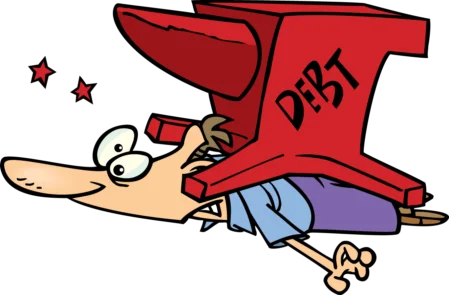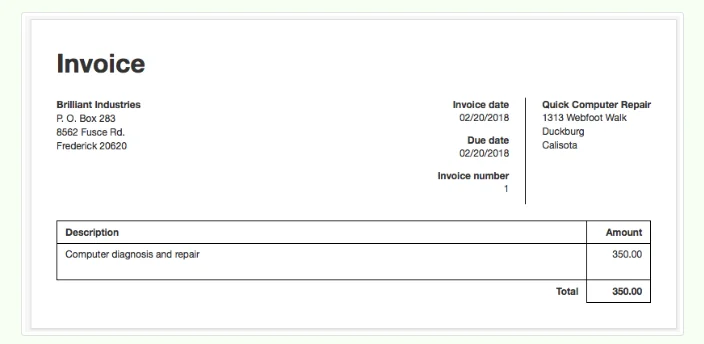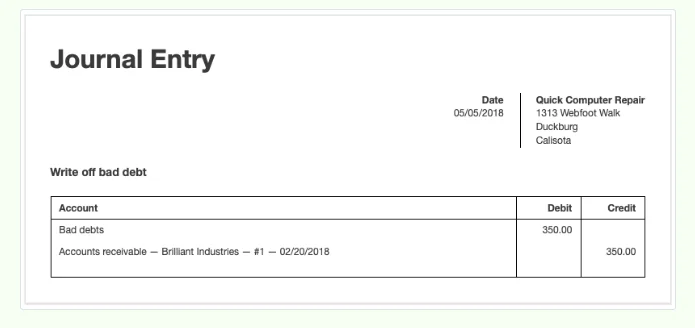Bad Debts
Manager Menu-Tabs > Sales Tabs

Bad Debts
Despite your best efforts to pre-qualify loan recipients, check customer credit references, and vigorously pursue collection, it may become necessary to write off bad debts. Debts can include loans you have made to others, balances due on sales invoices under Accounts receivable, or other assets recording money owed to you. Underlying reasons might include:
- Bankruptcy of the customer or debtor
- Legal disputes over contract terms
- Death or disappearance of a customer
- Termination of a business without payment of obligations
Whatever the reason, a debt should only be written off when there is a reasonable and sincere belief it cannot be recovered.
Note
Standards may exist in your jurisdiction for when bad debts can be written off and what evidence may be required to justify the write-off. Check with a local accountant or tax authority for accurate information.Write-offs of bad debts do not include credits for return of merchandise, price adjustments for faulty or damaged items, or warranty refunds. Those should be handled with credit notes, as described in another Guide.
Standards may exist in your jurisdiction for when bad debts can be written off and what evidence may be required to justify the write-off. Check with a local accountant or tax authority for accurate information.Write-offs of bad debts do not include credits for return of merchandise, price adjustments for faulty or damaged items, or warranty refunds. Those should be handled with credit notes, as described in another Guide.
Establish a Bad debts account
When a bad debt is written off, an asset that previously had the potential to generate income is converted to an expense. So you must choose an expense account for the write-off. Good practice is to add an account to the Expenses category of your chart of accounts, naming it something like Bad debts. But any suitable expense account can be used.
Write off a bad debt
Use a journal entry to write off a debt. Debit the Bad debts account by the amount being written off. Credit the asset account where the bad debt is recorded by the same amount.
Example
Quick Computer Repair previously invoiced Brilliant Industries 350.00 for computer repair services. No taxes were applied:

Brilliant Industries has gone out of business without paying for the work, so Quick Computer Repair must write off the bad debt. It makes a journal entry, debiting 350.00 to
Bad debts and crediting the same amount to Accounts receivable, Brilliant’s subaccount, and the specific sales invoice:

If the original debt was the result of a sales invoice, the journal entry leaves the income in the income account where it was first posted. This preserves a record of the economic activity. But that income is offset by the expense in the Bad debt account.
Adjust taxes
If the debt being written off was the result of a taxable transaction, things are more complex. You must first determine whether, under local tax law:
- Tax is payable to the authority because taxable goods or services were delivered, regardless of whether they were paid for, OR
- Tax is not payable because the goods or services were not paid for.
Tax is payableIn the first case, debit Bad debts for the gross amount of the debt, including taxes. Credit the asset account where the debt is recorded by the same amount. But do not apply any tax codes.
Example
The services in the prior example are subject to a 10% goods and services tax. The original sales invoice was entered as follows:
The services in the prior example are subject to a 10% goods and services tax. The original sales invoice was entered as follows:

showing this on the completed sales invoice:

Since the tax is payable regardless of collection status, the debt is written off with the following journal entry. Note the absence of tax codes:

After the journal entry is made, Sales still records the sale at 350.00. Bad debts records the full write-off at 385.00. And 35.00 remains in Tax payable. Thus, Quick Computer Repair incurs a loss on the transaction of 35.00, equal to the tax it must pay on behalf of its defunct customer.
Tax is not payable
In the second case, not only must the full debt be transferred to expenses, the tax liability must also be eliminated. So apply the relevant tax code to the Bad debt debit.
Example
The journal entry includes gross amounts and applies the tax code only to the debit line. The transaction is designated as a sales adjustment:
The journal entry includes gross amounts and applies the tax code only to the debit line. The transaction is designated as a sales adjustment:

Tax is removed from Tax payable. Both Sales and Bad debts include 350.00. The final result is no tax owed to the authority and no net profit on the transaction. But both sales activity and the bad debt are recorded.
Reverse a write-off
Occasionally, a bad debt legitimately thought to be unrecoverable becomes recoverable, such as when:
- A lost customer is located
- A customer or debtor emerges from bankruptcy and makes good on its former debts
Do not delete the write-off journal entry. Instead, place the formerly bad debt back into your assets with a reverse journal entry. This time, debit the asset account where the debt was lodged and credit Bad debts.
Example
Brilliant Industries resumes business and notifies Quick Computer Repair it will honor its former obligations. A second journal entry is made:
Brilliant Industries resumes business and notifies Quick Computer Repair it will honor its former obligations. A second journal entry is made:
Reverse a write-off
Occasionally, a bad debt legitimately thought to be unrecoverable becomes recoverable, such as when:
- A lost customer is located
- A customer or debtor emerges from bankruptcy and makes good on its former debts
Do not delete the write-off journal entry. Instead, place the formerly bad debt back into your assets with a reverse journal entry. This time, debit the asset account where the debt was lodged and credit Bad debts.
Example
Brilliant Industries resumes business and notifies Quick Computer Repair it will honor its former obligations. A second journal entry is made:
Brilliant Industries resumes business and notifies Quick Computer Repair it will honor its former obligations. A second journal entry is made:

(This illustration is for the second tax situation, where tax is not payable unless it is collected. In the opposite case, where tax is payable regardless, apply no tax code to
Bad debts on the credit side of the journal entry.)
The reversal leaves 35.00 in Tax payable, 350.00 in Sales, and removes the debt amount from Bad debts. Accounts receivable shows 385.00 due from Brilliant Industries, just as though the unfortunate circumstances had never occurred.
